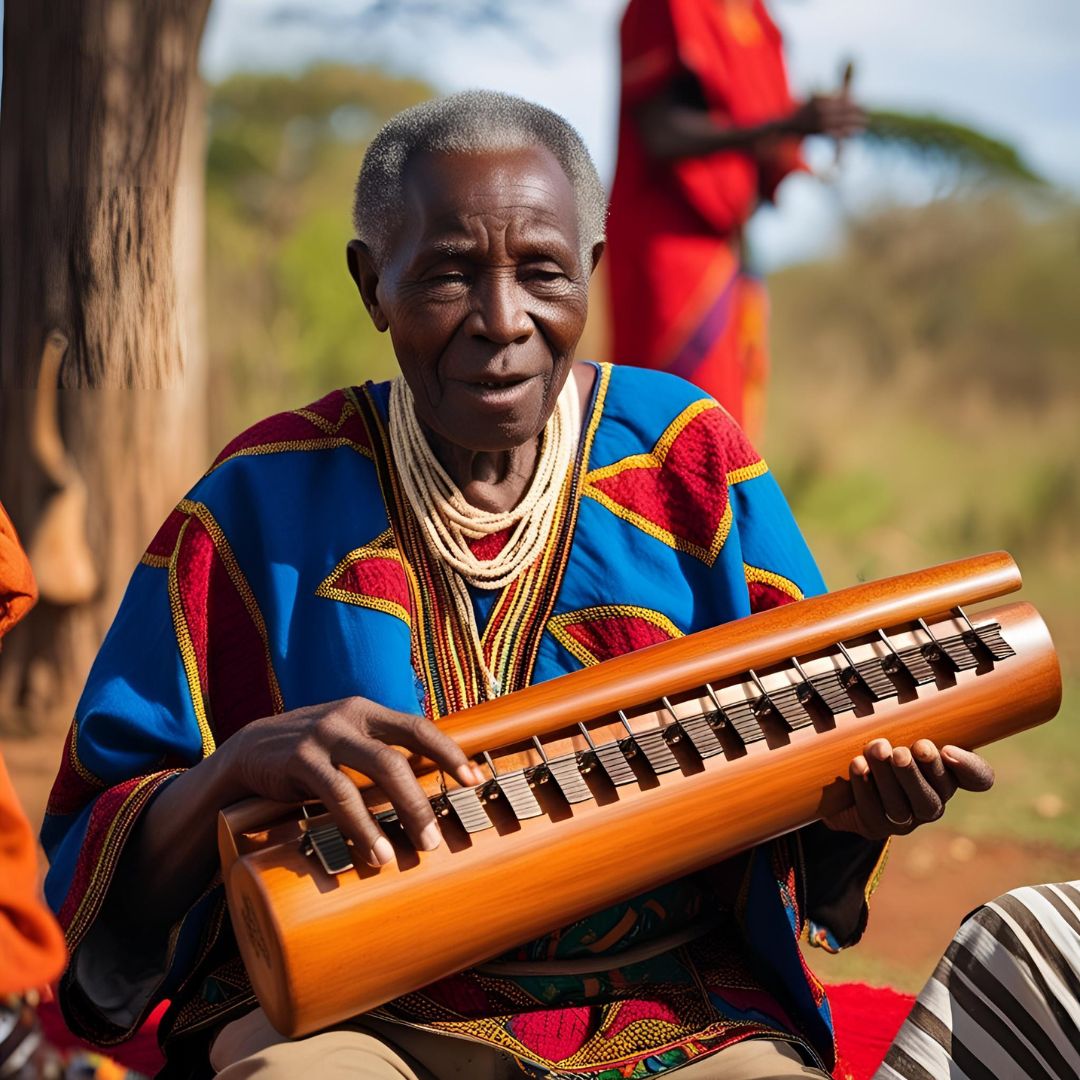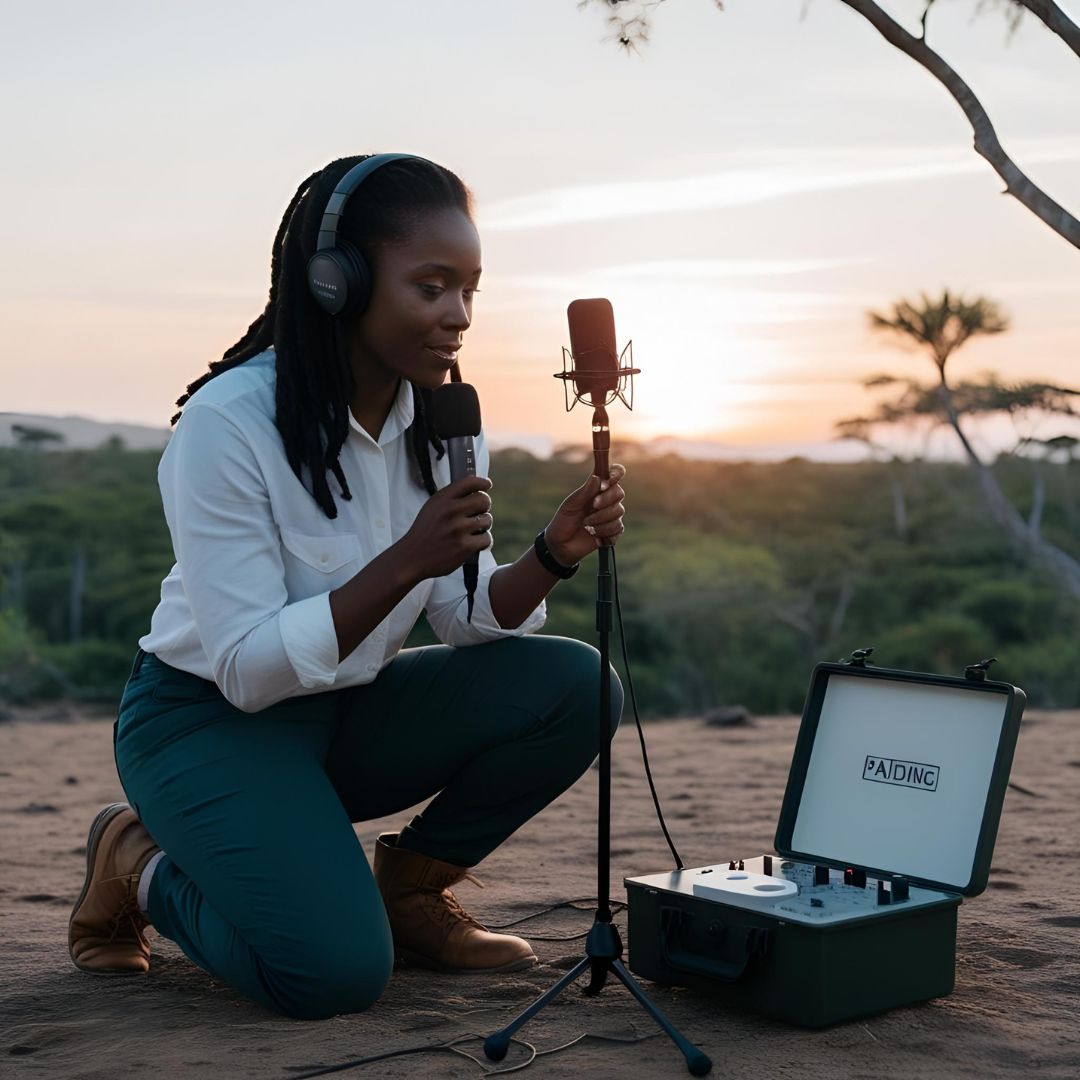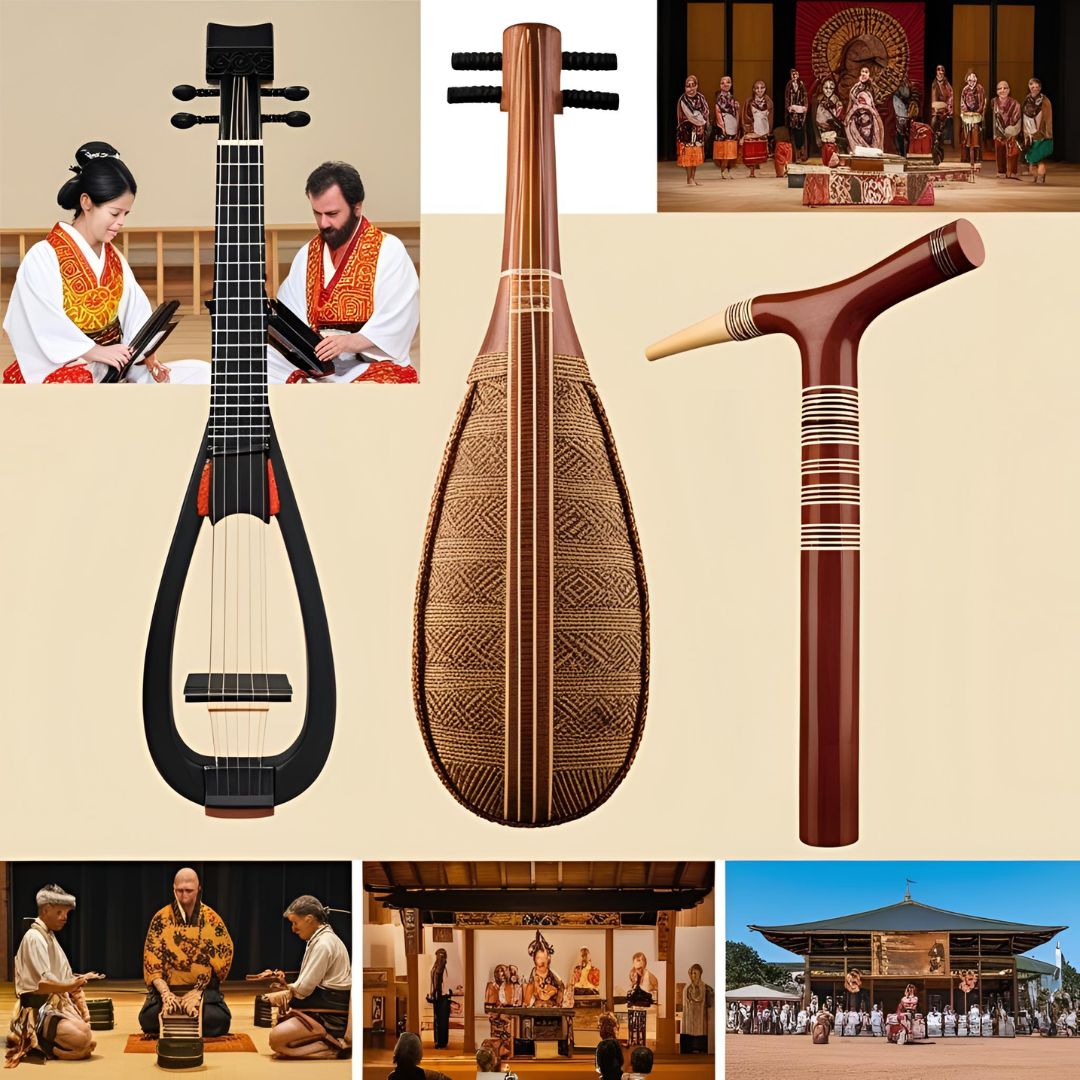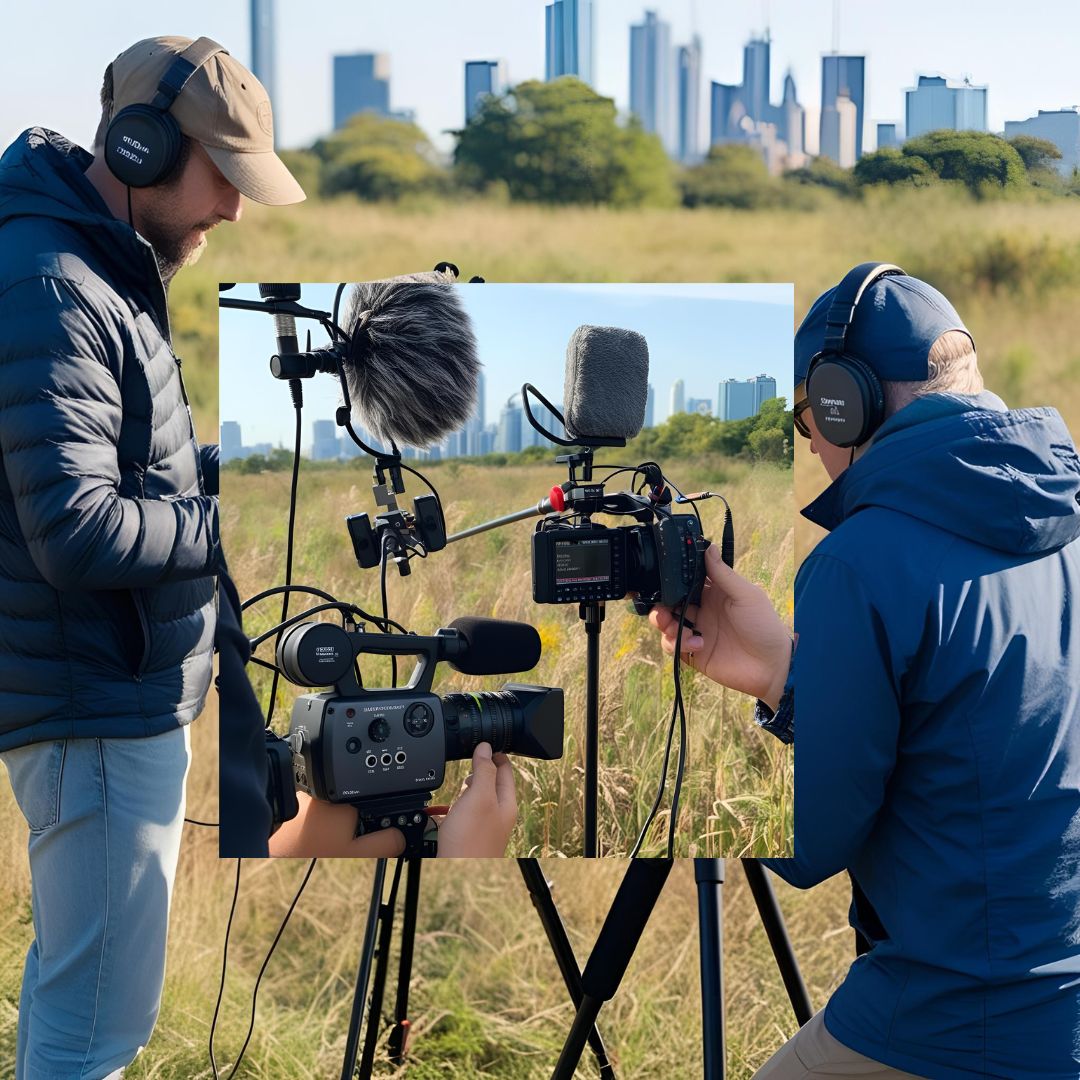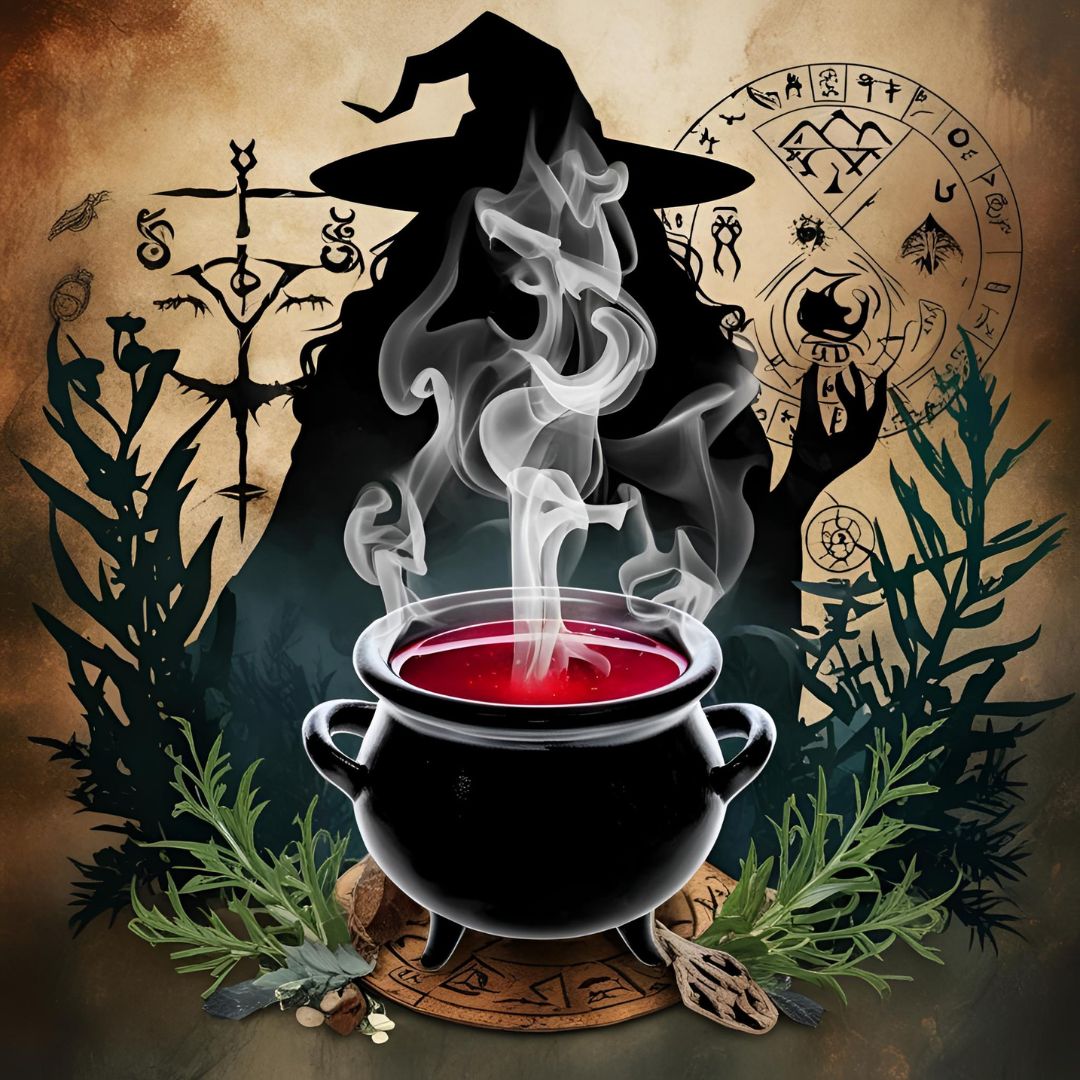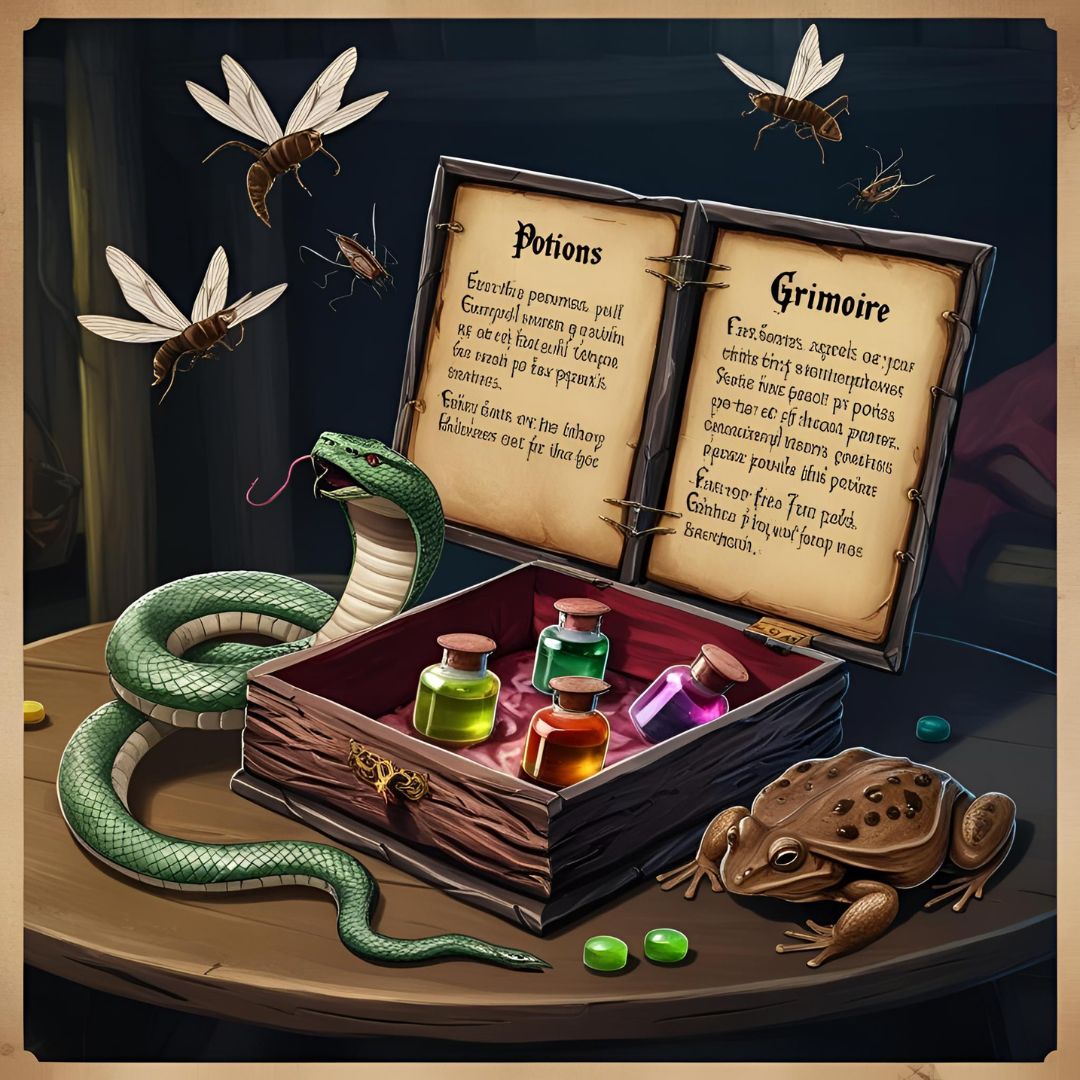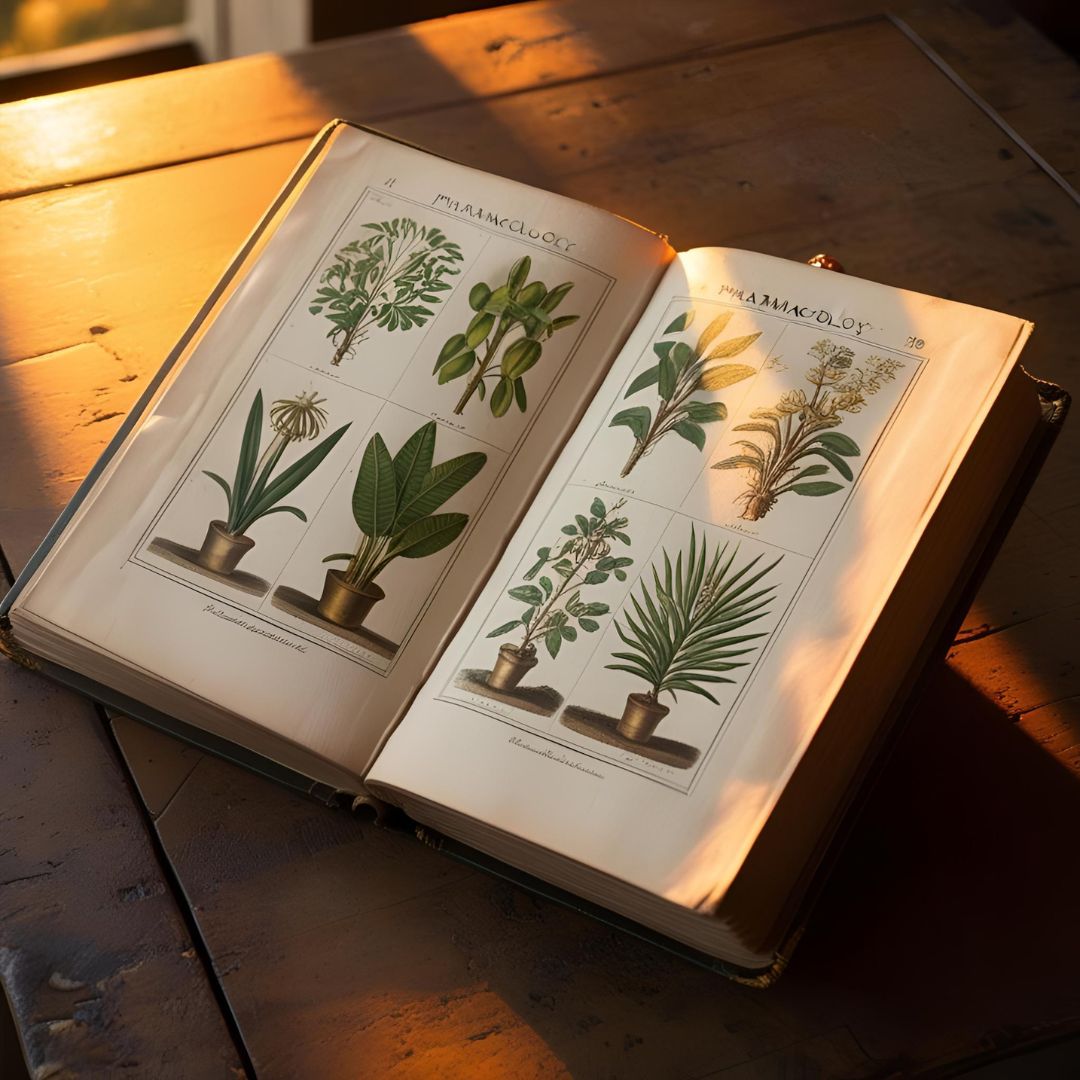In many African cultures, music goes far beyond entertainment. It is a spiritual expression, a connection to ancestors, and a tool for healing and celebration. Amidst drums and chants, a variety of traditional instruments—rich in sound and history—have gradually faded from common use, replaced by modern technologies. Yet their unique tones still echo in village memories, ceremonies, and rituals. Rediscovering these instruments is to reconnect with a powerful cultural heritage, crafted from wood, gourds, strings, and skins, with melodies that speak of identity, spirituality, and community. Kalimba: Melodies for the Spirit The kalimba, also known as the “thumb piano,” is made from metal tines mounted on a wooden resonator. Played with the thumbs, it produces soft, hypnotic sounds ideal for meditation and reflection. Traditionally, it’s used in healing rituals, spiritual invocation, and storytelling. Kalimba music guides listeners toward balance and ancestral connection. Although replaced in many contexts by digital instruments, it is finding new life in sound therapy and cultural revival movements. Ngoni: Rhythms of the Griot The ngoni, originating from West Africa, is considered an ancestor of the banjo. Made with wood and animal skin and strung with 4 to 7 strings, it produces dry, rhythmic sounds that pulse with the oral traditions of the Mandinka people. Griots—traditional storytellers—used the ngoni during ceremonies and gatherings to pass down wisdom. Though its practice has declined, modern musicians are reviving it by blending it with jazz, blues, and electronic music. Balafon: The African Xylophone The balafon is an ancient African xylophone made of wooden slats over calabash resonators. Each calabash is precisely tuned to amplify specific notes, resulting in metallic, vibrating sounds. Used by cultures such as the Bambara and Dogon, the balafon plays a central role in rites of passage, weddings, and funerals. Each melody carries meaning—communicating emotions like sorrow, joy, or strength. Despite threats from urbanization, cultural projects in countries like Burkina Faso and Mali aim to preserve and teach the balafon to new generations. Mbira: Voice of the Ancestors Closely related to the kalimba, the mbira is one of the most spiritual instruments in Africa. Among the Shona people of Zimbabwe, it is used in ceremonies called bira to summon ancestral spirits. Built with metal keys over a wooden board and a calabash resonator, the mbira produces deep, complex harmonics that seem to emerge from another realm. It plays a role in storytelling and induces trance-like states. Although modern instruments have overtaken its use in many places, educational projects are reintroducing the mbira to schools and cultural centers. Instruments That Carry Cultural Wisdom These instruments are not just musical devices—they are vessels of collective memory, emotional healing, oral education, and spiritual connection. Their sounds mark life’s transitions, honor the sacred, and reinforce communal bonds. Their materials—bamboo, gourds, leather, and wood—reflect the land they come from, and each tone carries a story. Losing these sounds also means losing worldviews and values that have endured for centuries. Preserving Sound, Preserving Culture Yet there is hope. Musicians, ethnomusicologists, teachers, and communities are reclaiming these traditions, blending ancient techniques with modern creativity. Cultural revival movements and education initiatives across Africa are making sure these instruments continue to speak. A Listening Experience That Transcends Time Listening to forgotten African instruments offers more than just auditory pleasure—it’s a journey into ancestral wisdom. In a world dominated by digital noise and fast rhythms, these sounds invite conscious listening, inner silence, and cultural respect. Each melody played on a mbira or ngoni reminds us of sound’s power—to heal, to teach, and to connect. By rescuing these forgotten voices, we retell the story of humanity.
Field Recording: Capturing the World in Rare and Exotic Sounds
The world is a vast sonic landscape filled with textures, rhythms, and unique frequencies that often go unnoticed. Field recording is the art of capturing these sounds in their original environments — whether it’s the call of an endangered bird in a rainforest, the wind sweeping across desert dunes, or the subtle sounds of a city waking up at dawn. This practice blends technique, artistic sensitivity, and an explorer’s spirit, allowing us to document the planet through the sense of hearing. Below, we’ll explore what field recording is, how it works, the essential gear, effective techniques, and fascinating stories of rare recordings that preserve the sounds of a rapidly changing world. What Is Field Recording? Field recording refers to recording sounds outside of controlled studio environments, typically in natural, urban, or rural settings. It can include sounds of nature (water, wind, animals), human environments (markets, celebrations, transportation), and even unique sonic phenomena like underground seismic activity or the sound of cracking ice in the Arctic. More than simply capturing audio, the goal is to document the authentic sound of a place. Many of these recordings are used in documentaries, music, films, art installations, games, and even scientific research. The richness of these recordings lies in the spontaneity and uniqueness of the original sound. Essential Equipment for Field Recording Capturing the sound of the world requires the right tools for varying conditions. Here are the key pieces: Techniques to Capture the World’s Sound Technique matters as much as equipment. Some practical tips include: Exotic Locations and the Challenges of Field Recording Recording in extreme locations offers unique challenges: Rare Stories of Nearly Lost Sounds Field recording also acts as a time capsule. Here are some notable rare recordings: These recordings are more than technical achievements — they tell invisible stories, reveal vanishing worlds, and turn sound into memory. An Artistic and Scientific Lens Field recording sits at the intersection of science, art, and documentation. While researchers use it to monitor environmental changes, sound artists and musicians explore its expressive potential. Recordings may be raw or creatively manipulated depending on the purpose — but the common thread is always a respect for the original sound. In the digital age, these sound files can be shared globally, accessible for study, sound therapy, sound design, or simply to ignite curiosity about worlds we’ve never seen — but can now hear.
Soundscapes: How Sound Shapes Our Perception of the World Around Us
Sound not only complements the environment around us but also plays a fundamental role in how we perceive the world. Every natural environment has its own unique “sound signature,” composed of the sounds of animals, wind, water, and vegetation. These sounds, often referred to as soundscapes, deeply influence our emotional, cognitive, and even physical well-being. This post explores the concept of soundscapes, their importance to ecosystems, the impact of urbanization on these sounds, and how they can be used in sound therapy and relaxation. The Concept of Soundscapes The term “soundscape” was coined by Canadian composer and researcher R. Murray Schafer in the 1970s, referring to the acoustic environment in which we are immersed — a combination of natural sounds, such as birdsongs, flowing water, wind in trees, and human sounds like conversation and music. This “landscape” consists of a variety of sounds that form a unique sonic identity for each environment. For example, in forests, the soundscape may include the crunch of dry leaves being stepped on, distant bird calls, and the rustling of trees in the wind. In the ocean, the predominant sounds might be the crashing of waves on rocks, whale calls, and the soft breeze. In the mountains, the sounds are more reserved, including the echo of rocks falling and the wind cutting through the cold air. These sounds are not just noises; they are the way we feel the presence of the environment. They can transport us to different places and times, creating a sense of immersion and connection with nature. The soundscape is like an auditory painting, revealing the complexity and vitality of an ecosystem. The Importance of Soundscapes to Ecosystems Soundscapes play a crucial role in ecosystems. In many animal species, sound communication is essential for survival, whether to attract mates, warn of predators, or mark territories. For example, birdsongs are a vital form of communication, both for establishing dominance and attracting the ideal mate. Similarly, sounds emitted by marine mammals like whales and dolphins are crucial for navigation and long-distance communication. Additionally, sound plays an important role in plant pollination and seed dispersal. Insects, birds, and other animals that interact with plants and flowers often do so guided by sound cues, such as the buzzing of bees or the singing of birds. Therefore, the soundscape of an ecosystem is inextricably linked to the maintenance of biodiversity. The loss of the natural soundscape, caused by human activities such as urbanization, noise pollution, and habitat destruction, can affect these delicate interactions and compromise the health of an ecosystem. Preserving these sounds is not only important for human enjoyment but also to ensure the continuity of life on Earth. The Impact of Urbanization on Soundscapes With the rise of urbanization, many natural soundscapes have been replaced by artificial sounds. The constant noise of cities, such as traffic, sirens, and construction, creates a chaotic soundscape that can have detrimental effects on human well-being and the environment. In urban areas, excessive noise can cause stress, sleep problems, loss of concentration, and even damage to mental health. Noise pollution is a consequence of urban growth and can be as harmful as air or water pollution. This transformation of the natural acoustic environment into a space filled with artificial sounds alters our perception of the surrounding space, making it more tense and, in many cases, harder to bear. The loss of natural soundscapes can also impact wildlife that still inhabits urban or peripheral areas. Animals may be forced to adapt to new sounds, which can affect their ability to communicate, feed, and reproduce. The result is a change in ecological dynamics, affecting local biodiversity. Sound Therapy and Relaxation: Healing Through Sound With the increase in noise pollution in cities and the impact of urban stress, natural soundscapes have increasingly been used as a therapeutic tool. Sound therapy is a practice that uses natural sounds or specially created sounds to promote relaxation and emotional balance. Many health professionals have used recordings of soundscapes, such as ocean waves, birdsongs, or the wind in the trees, to help alleviate stress, improve sleep, and promote meditation. Studies show that exposure to natural sounds can reduce cortisol levels (the stress hormone), improve concentration, and enhance overall well-being. In addition, in some cultures, the use of ritual sounds and traditional music — such as Tibetan bells, gongs, and drums — has been a healing practice for centuries. These sounds have the ability to induce altered states of consciousness, aiding in deep meditation and reconnection with the inner self. Each sound, with its frequency and vibration, can have specific effects on the body and mind, promoting harmony and balance. Soundscapes are an essential component of how we perceive the world around us. They not only help shape our emotional and sensory experience but also play a crucial role in maintaining ecosystems and communication among species. With the growing trend of urbanization and noise pollution, it is more important than ever to protect and value these natural sounds. Furthermore, soundscapes can be a powerful tool in promoting well-being and health, being used in therapeutic practices and relaxation techniques to restore our connection with nature and promote inner peace.
The Exotic Instruments of the World: Sounds That Transcend Borders
Music has the power to cross borders and unite cultures. Throughout history, various exotic instruments have become symbols of their regions of origin, carrying not only unique sounds but also deep stories and traditions that go far beyond the notes they produce. From soft melodies to deeply spiritual sounds, instruments such as the Japanese shamisen, the Armenian duduk, and the Australian didgeridoo transcend geographical and cultural limits, bringing out the character and soul of different peoples. This post explores these instruments and their importance in the global music scene. Japanese Shamisen: The Spirit of Japanese Tradition The shamisen is a traditional Japanese string instrument with an unmistakable sound that is rich in history. With three strings and a resonating body made of wood covered with skin, the shamisen is played with a plectrum called “bachi.” Its origins trace back to the 16th century, when it was introduced to Japan from China, but it quickly became an integral part of Japanese culture, especially in kabuki theater and bunraku performances, as well as other traditional music presentations. The sound of the shamisen is characterized by a strong, vibrant, and sometimes melancholic tone, ideal for expressing intense emotions. The depth of its sound reflects Japanese culture, with a strong connection to nature and human emotions. For the Japanese, the shamisen is not just an instrument, but a form of artistic expression that connects people to their cultural and spiritual past. Moreover, the shamisen plays a key role in traditional ceremonies, performances, and even popular festivals. Its sound serves as a storytelling tool, conveying feelings that are often difficult to express with words alone. Armenian Duduk: The Voice of the Armenian Soul The duduk is a traditional wind instrument from Armenia, known for its soft and penetrating sound that evokes deep feelings of nostalgia and melancholy. Made from plum wood and featuring a double-reed mouthpiece, the duduk produces notes that directly touch the listener’s soul. Its unique sound is often associated with moments of introspection and reflection. The history of the duduk dates back thousands of years and has been an integral part of Armenian culture since ancient times. Traditionally, it was used in religious ceremonies, folk celebrations, and even shamanic rituals. Its cultural significance is so profound that the duduk was included in UNESCO’s Intangible Cultural Heritage list. The sound of the duduk is deep and resonant, and its ability to evoke emotions is extraordinary. In performances, the duduk is often accompanied by other instruments, such as percussion and drums, creating an atmosphere of harmony that unites musicians and listeners in an intense sensory experience. Even outside Armenia, the duduk has been adopted by musicians from around the world, expanding its influence and demonstrating its versatility. Australian Didgeridoo: The Ancestral Sound of the Land The didgeridoo is one of the world’s oldest instruments, used by the Aboriginal people of Australia for over 1,500 years. This wind instrument, typically made from hollow eucalyptus wood, has a deep, vibrant, and mysterious sound that is both hypnotic and meditative. The playing technique involves circular breathing, allowing the musician to maintain a continuous sound for long periods, creating a trance-like atmosphere. The didgeridoo is not just a musical instrument but also a ritualistic object deeply connected to the spiritual and cultural beliefs of the Aboriginal people. In many Aboriginal cultures, the didgeridoo is seen as a means of communication with the ancestors and the spiritual world. It is played during sacred ceremonies, traditional dances, and healing rituals. The sound of the didgeridoo, with its deep and repetitive vibrations, is often associated with nature and the cycles of the earth. Its sound evokes images of vast, wild Australian landscapes. Even outside of Australia, the didgeridoo has gained popularity worldwide, being used in various musical genres and sound experiments. The Cultural Importance of These Instruments in the Global Music Scene Each of these instruments — the shamisen, the duduk, and the didgeridoo — carries the identity and history of its people, being more than mere sound objects. They are the cultural and spiritual expression of their regions and have played key roles in local musical traditions. Over time, these instruments have not only enriched their cultures of origin but have also made significant contributions to the global music scene. In the present context, these instruments continue to play a vital role in preserving and transmitting cultural traditions. They have become popular in various parts of the world, being incorporated into different musical genres and even used in innovative fusions with modern sounds. The globalization of music has allowed the sounds of the shamisen, duduk, and didgeridoo to transcend borders, connecting with audiences worldwide and creating a network of sounds that celebrates cultural diversity.
The Art of Audio Documentary: Sounds That Tell Stories
Sound plays a crucial role in shaping any documentary, often being the invisible link that connects the viewer to the narrative in a visceral and emotional way. Through the strategic use of sounds, documentarians can transport the audience to different environments, intensify emotions, and even tell stories in a deep and engaging manner. The art of audio documentary is not limited to music or dialogue; it involves a meticulous exploration of ambient sounds, field recordings, and sound effects to create an immersive experience that goes far beyond what the eyes can see. The Role of Sound in Emotional Immersion Sound has a unique power to touch human emotions. In the context of documentaries, it is used to create an atmosphere that resonates with the viewer, amplifying the emotions portrayed in the story. A subtle ambient sound can be enough to induce a feeling of melancholy or rising tension, while a carefully chosen background music can intensify moments of joy, drama, or suspense. Music is often used to set the tone of a scene or to evoke an immediate emotional response. However, it is ambient sounds and field recordings that truly have the ability to immerse the audience in a specific place or situation. The sound of footsteps in the snow, the whisper of the wind, or the distant hum of a crowd can place the viewer inside the action, making them feel as if they are living the experience alongside the characters. Ambient Sounds: Building Atmospheres One of the greatest tricks of the audio documentary is its ability to build atmospheres through ambient sounds. The soundscape is, in many cases, more than just the backdrop to a narrative; it becomes a character in itself. The choice of background sounds, such as car horns honking, birds chirping at dawn, or the noise of a factory in operation, helps create the necessary context for the story. These sounds not only establish where the story takes place but also how it takes place. For example, in a documentary about city life, the sound of car horns, hurried conversations, and background music can illustrate the chaotic and fast-paced nature of the environment. In contrast, the soft sound of waves crashing on the rocks can be used to represent tranquility and introspection in a story set on an isolated beach. Field Recordings: Authenticity in Documentary Field recordings, which capture sounds directly from the environment without modifications, are one of the most powerful tools in audio documentary. They bring authenticity to the story, allowing the viewer to experience the reality of a place or event in a more direct way. Using field recordings allows for specific sounds of a locality — such as the call of a rare bird or the murmur of a market — to be heard clearly and unmistakably, establishing a stronger connection with the environment being narrated. By capturing sounds in their raw form, filmmakers provide the audience with a sense of proximity to the documentary’s subject. This creates a richer sensory experience, where the viewer can, for example, hear the sound of an explorer’s footsteps in the forest, the murmur of a local market, or the sound of rain falling on an empty street. These recordings, often made on location, can turn a simple story into something incredibly visceral and tangible. The Importance of Sound Effects in Narrative Construction While ambient sounds and field recordings are essential for immersion, sound effects also play a crucial role in creating tension, humor, and drama. Sound effects can be used to simulate situations, heighten the perception of events, or even bring life to elements of the story that would otherwise go unnoticed. For example, the sound of a creaking door can suggest mystery or imminent danger, while the ticking of a clock can create a sense of urgency and pressure. When used intelligently, these sound effects help direct the viewer’s emotions, amplifying the impact of key moments in the narrative. In a documentary, sound effects can also be used to represent the voice of a person or group, even without words. The sound of a machine, a child’s cry, or the sound of firm footsteps can symbolize the strength of a character or the weight of a situation, without the need for explanatory dialogue. The Challenge of Sound Subjectivity One of the greatest challenges in using audio in documentaries is its subjective nature. Sound, much like music, has the ability to evoke emotional reactions that can vary from person to person. A sound that may be disturbing to one viewer may not have the same effect on another. This requires filmmakers to be extremely careful in selecting sounds to ensure that the desired impact is effectively communicated. Additionally, sound is a tool that must be harmoniously combined with visuals. The precise synchronization between audio and image is crucial for the story to be told cohesively and engagingly. A failure to combine sound and image effectively can undermine the immersion and diminish the emotional impact of the work. Sounds as Identity Elements In the context of a documentary, sound is not only a technical tool; it can also be used as an identity element. Each documentary can create a “sonic signature,” which becomes a distinctive feature of the work. Specific sounds, such as a theme song or a recurring sound effect, can be used to reinforce the message of the documentary and create a sense of continuity and cohesion throughout the narrative. Moreover, the choice of sounds can be used to highlight the cultural or geographical identity of a place or person. The sound of traditional instruments, such as an indigenous flute or an African drum, can transport the audience to a specific region, while a local dialect or a native language can reinforce the authenticity and cultural depth of the documentary.
Mysticism and Sounds: The Use of Esoteric Sounds and Ritual Rhythms in Ancient Cultures
The relationship between sound and spirituality spans thousands of years, and in various ancient cultures, sound is used not only as a tool for communication but also as a means to reach elevated states of consciousness and spiritual connection. Esoteric sounds, such as those produced by Tibetan singing bowls, gongs, and tam-tams, are central elements in rituals and meditative practices. These sounds carry a unique energy, capable of inducing trance, healing, and soul elevation. Below, we explore how these esoteric sounds are used in different cultures and the profound impact they have on the mind and body. The Power of Sound and the Human Body Since ancient times, different civilizations have recognized the power of sound. In many traditions, sounds are seen as more than just acoustic vibrations; they are viewed as vehicles for achieving spiritual transcendence. Sound has a direct influence on brainwaves, capable of inducing altered states of consciousness such as trance and deep meditation. Human beings are largely made of water, and sound vibrations can affect this substance, altering our internal states. Traditional Chinese medicine, for example, believes that sounds have the power to heal internal imbalances, restoring harmony between body and mind. In India, the use of mantras and ritual sounds is a fundamental component of yoga and meditation practices. These sounds create a direct connection to the universe, facilitating the flow of vital energy, known as prana. Esoteric Sounds: The Case of Tibetan Singing Bowls Tibetan singing bowls, also known as Tibetan bowls, are one of the most emblematic examples of how sounds can be used in spiritual and therapeutic practices. Made typically from an alloy of precious metals, these bowls produce a deep, resonating sound when struck with a mallet. The sound reverberates in a unique way, creating a sensation of internal and external resonance. These bowls are used in various Tibetan spiritual practices, including meditation and healing rituals. The sound produced by the singing bowls helps balance the chakras, the body’s energy centers, and promotes a profound sense of well-being. Additionally, it is believed that these sounds can open channels of communication with the spiritual world, being used for invocations of spiritual entities and purification of the environment. Gongs and the Cosmic Rhythm The gong is another powerful instrument in the world of mystical sounds. Originating in Asia, this large metallic instrument is played with hammers of varying sizes to produce a range of sounds, from soft vibrations to intense, powerful resonances. The gong has been used for centuries in religious ceremonies, shamanic rituals, and healing practices. When struck, the gong creates a profound sound that can resonate at very low frequencies. This resonance is thought to stimulate the perception of both body and mind, bringing listeners into deep relaxation and expanding their consciousness. Gongs are known as healing instruments, capable of providing a “reset” for the energetic system of individuals, clearing emotional blockages, and promoting physical and spiritual balance. Tam-Tams and Spiritual Invocation In Africa and various parts of the world, tam-tams or ceremonial drums play a central role in spiritual and ritual practices. Tam-tams are used to invoke spirits, facilitate communication with deities, or even summon ancestors during religious ceremonies. The constant and pulsating rhythm of these drums can generate a collective trance, where participants are taken to an altered state of consciousness, accessing spiritual planes and receiving guidance or healing. When played in a specific rhythm, these ritual sounds have the power to connect participants to a cosmic energy, allowing them to feel as part of a universal whole. The drum sound, with its rhythmic beat, is capable of evoking a sense of unity with the universe, providing practitioners with a profound sense of belonging and purpose. Sound in Shamanism In many shamanic traditions, sound is an essential tool for spiritual work and healing. Shamans use instruments such as drums, maracas, and flutes, as well as their own voices, to create sounds that aid in spiritual journeys. Sound plays a crucial role in trance states, during which the shaman believes they can access other worlds, contact spirits, and bring healing to those seeking help. These sounds are also used in invocations and protection rituals. Sound is believed to have the power to drive away negative energies and create an environment conducive to communication with the beyond. In some cultures, it is believed that sounds can alter reality, and shamans use sound vibrations to interact with the forces of nature and the universe. Sounds for Meditation: Tradition Meets Modernity In more modern times, the use of mystical sounds has expanded beyond traditional practices and integrated into alternative therapies and wellness practices. The use of sounds such as binaural frequencies and solfeggio tones has become popular among those seeking to improve meditation and achieve a state of inner peace. These sounds, which operate at specific frequencies, are designed to stimulate the brain and induce deep relaxation and concentration. While meditation with mystical sounds is often associated with ancient traditions, the practice of using sound to achieve inner peace and spiritual connection has modernized, offering new ways to harness the power of sound. Many people now use apps or audio devices to experience these frequencies, allowing the spiritual and therapeutic benefits to be accessible to all. The Science Behind Esoteric Sounds Although many still consider esoteric sounds to be something mystical or spiritual, science has begun to investigate how these practices can have real effects on the body and mind. Studies on the neuroscience of sound frequencies indicate that vibrations can alter brainwave states, inducing relaxation or concentration. Specific sounds, such as those used in meditative practices, are known to affect brainwaves in ways that facilitate deeper states of consciousness, such as the alpha or theta state, associated with deep meditation and relaxation. Additionally, sound vibrations can impact the autonomic nervous system, promoting stress reduction, lowering blood pressure, and improving overall well-being. Thus, esoteric sounds are not only a form of spiritual practice but also a tool that can be used for
Mythology and Poison: Gods, Witches, and Magical Substances
Poison has always been a powerful and mysterious presence in ancient cultures, not just as a lethal substance but also as an essential element in many stories and myths. The relationship between poison and magic is profound, permeating tales of gods, witches, and immortal heroes. From fatal potions to curses that span generations, poison has been linked to mysticism and supernatural power. In this post, we will explore how poisonous substances play a key role in mythology, literature, and history, influencing the fate of legendary characters. Hercules and the Poisoned Tunic: The Hero and the Fatal Poison One of the most well-known stories involving poison in Greek mythology is the tragedy of Hercules and his poisoned tunic. After completing the twelve labors and performing extraordinary feats, Hercules was about to marry Deianira, but a series of fateful events led to his death. Deianira, fearing that Hercules might fall in love with another woman, sought help from the centaur Nessus to bring a “remedy” to guarantee the hero’s eternal love. Nessus, who had been wounded by Hercules earlier, decided on revenge and offered Deianira a tunic soaked in his poison. Believing it to be a miraculous gift, Deianira gave the tunic to Hercules, who, upon wearing it, felt the poison spread throughout his body. The poison from the centaur was so powerful that it caused Hercules unbearable pain, forcing him to immolate himself on a pyre to end his suffering. The story of Hercules and the poisoned tunic is one of the most dramatic manifestations of poison in mythology, where the poison not only causes death but also triggers a tragic destiny. Medea: The Witch and Her Poisonous Potions Medea, the famous witch in Greek mythology, is one of the most emblematic figures when it comes to poison and magic. Her story is marked by betrayal and the use of magical substances, which made her one of the most complex characters in mythology. After helping Jason conquer the Golden Fleece, Medea fell in love with him and used her powers to assist him in his deeds. However, when Jason abandoned Medea to marry the daughter of King Creon, Medea took revenge with a poisonous potion. She gave her rival, the princess, a poisoned dress that caused a horrific death. The poison was so potent that it not only killed the princess but also her father, who tried to save her. Moreover, Medea is responsible for one of the most shocking poisonings in mythology: she kills her own children with a poisonous substance in an act of revenge against Jason. Medea’s use of poisons is not just a matter of magical power, but also a manifestation of her pain and anger, highlighting the destructive side of poison in a narrative of love, betrayal, and vengeance. The Witches of the Middle Ages: Witchcraft and Poison in the Shadows The Middle Ages was a period full of superstitions and magical practices, where witches were often associated with the use of poisons and potions. For centuries, women accused of witchcraft were portrayed as responsible for curses, illnesses, and the death of animals and even humans, often through poisonous substances. The witches of the Middle Ages were frequently linked to herbs and poisonous plants, and many accounts describe hallucinogenic potions used to alter perception and induce delirium. Some of these potions were made from ingredients like belladonna, mandrake, and hemlock — plants known for their poisonous and hallucinogenic properties. The combination of these substances caused the witches’ victims to experience visions and behave erratically. During the witch trials, many of these women were accused of using poison to poison their enemies, causing illness, death, or madness. While many of these cases were based on superstitions and false accusations, the association between witches and poison is an important part of the history of black magic and the persecution of women during the Middle Ages. Poison in the Ancient World: The Use of Magical Substances in Ancient Cultures Poison has always been a tool of power, both in the world of magic and politics. In ancient cultures, the use of poisons was often linked to religious rituals and supernatural powers. Many ancient peoples, such as the Egyptians and the Romans, believed that certain substances could be used to invoke gods or obtain spiritual favors. Poison, therefore, was not only seen as a deadly weapon but also as a magical substance with the power to transform reality and the destinies of individuals. The Egyptians, for example, were known to use poisons and toxic substances in their mummification practices, believing that certain compounds helped guide the soul of the deceased to the afterlife. In addition, the use of poisons in sacrifice rituals and magic was common in many ancient cultures, who believed that poison had the power to purify or transform spiritual energies. Poison and Symbolism in Magic: Gods, Demons, and Venom The gods and goddesses of ancient mythologies often had ambiguous relationships with poison. While some gods were known to use it for punishment or protection, others were intimately connected to poison as a symbol of divine power. For instance, in Greek mythology, Hermes, the messenger of the gods, was frequently associated with potions and magical substances, including poisons. In Norse mythology, gods were also known to be involved in plots involving poisons, such as the case of Loki and the venomous serpent that poisoned the god Balder. Furthermore, poison in mythology often symbolizes the duality between life and death, good and evil, power and destruction. Indeed, poison was a powerful metaphor for fate, often reflecting the uncontrollable forces of nature and the cosmos.
The Garden of Horrors: Ornamental Plants That Can Kill
When we think of gardens and ornamental plants, the image of vibrant flowers and lush foliage comes to mind. They beautify homes, balconies, and gardens around the world, offering a touch of nature and tranquility. However, behind their beauty, some of these plants hide a deadly power. They are more than just ornamental — they are poisonous, and their contact or ingestion can be fatal. In this post, we’ll explore some of these dangerous plants, curiosities about them, and the precautions needed to avoid accidents. Oleander: The Fatal Beauty Oleander (Nerium oleander) is a common plant in tropical and subtropical gardens due to its vibrant flowers and resistance to hot climates. However, all parts of the plant are extremely toxic, including flowers, leaves, and stems. The poison in oleander contains cardiac glycosides, substances that affect the heart and can cause fatal arrhythmias if ingested. Ingesting just a few leaves can be deadly to an adult. In addition to the danger of ingestion, oleander can also cause serious problems when it comes into contact with the skin. In some people, it can cause dermatitis or allergic reactions. Many people are unaware of how dangerous oleander is, as its beauty hides its deadly nature. There have been cases of accidental poisoning, especially among children and pets who end up ingesting its parts. “Comigo-Ninguém-Pode”: The Deadly Euphorbia The Euphorbia (also known as “comigo-ninguém-pode”) is a common plant in gardens and landscaping, with its spiny and attractive appearance. However, its name is already a warning: this plant is highly poisonous. Its sap contains toxic compounds that, if they come into contact with the skin or eyes, can cause severe burns, irritation, and even temporary blindness. Ingesting any part of the plant can cause severe symptoms, such as abdominal pain, nausea, vomiting, and, in extreme cases, death. There are stories of people who, while handling Euphorbia without gloves or proper care, suffered severe allergic reactions. The sap, which is milky in color, can be dangerous, especially if touched carelessly. Often, the plant’s poison can be accidentally transmitted to others when sharing gardening tools or playing with children and pets. Castor Bean: The Deadly Oil Plant Castor bean (Ricinus communis) is a plant widely cultivated in many regions of the world, both for its beauty and its industrial properties. The seeds of the castor plant are used to produce castor oil, which has various uses, from cosmetics to medicines. However, castor bean seeds also contain one of the deadliest substances known to humanity: ricin. Ricin is an extremely toxic protein, and ingesting just a few castor seeds can be fatal. Even ingesting a small amount of castor oil or powder can cause severe symptoms, such as intense abdominal pain, diarrhea, vomiting, and organ failure. While castor oil itself is safe for consumption in small amounts, the seeds should never be handled carelessly. Historically, castor bean was used in poisonings, including famous murders, due to the ease of access to its seeds and the potency of ricin. Despite its use in industry, the plant remains one of the most dangerous in a domestic garden, and parents should take extra care to prevent children or pets from accessing its seeds. Angel’s Trumpet: The Enchanting Killer Angel’s trumpet (Brugmansia) is an ornamental plant extremely popular for its large, trumpet-shaped flowers that emit a sweet fragrance. However, this plant is one of the most potent poisons known in nature. The leaves, flowers, and seeds of angel’s trumpet contain tropane alkaloids, such as scopolamine and hyoscyamine, substances that affect the central nervous system, causing hallucinations, delirium, and, in large quantities, death by respiratory paralysis. Despite its attractive appearance and use in landscaping, angel’s trumpet is extremely dangerous if ingested or if its parts are handled improperly. In some cultures, its hallucinogenic properties were explored in shamanic rituals, but the risk of overdose was always a concern. Since angel’s trumpet can be confused with other ornamental plants, it’s crucial for people to be aware of its toxic potential. Necessary Precautions: How to Avoid Accidents While these plants can be extremely dangerous, accidents can be avoided with a few simple precautions. Here are some tips to ensure safety in the garden: Curious Stories: The Dark Side of the Garden Throughout history, many tragedies involving poisonous plants have been recorded. One famous story is of a political leader being assassinated with ricin extracted from castor seeds. Angel’s trumpet also has a dark history in indigenous cultures, where its sap was used in rituals and to cause paralysis in enemies. Despite its use in traditional practices, the real danger of these plants should never be underestimated. They remind us that nature, as beautiful as it may be, can be unforgiving.
Venomous Bestiary: Toxic Animals and Their Uses in Ancient Magic
Since ancient times, humanity has attributed symbolic and spiritual meanings to animals — especially those with dangerous or unusual traits. Among them, venomous creatures have always aroused fascination and fear. Whether due to their deadly secretions, vibrant colors, or stealthy behavior, these animals became central figures in magical practices, occult rituals, and even traditional healing systems. In various cultures, poison was not only a weapon but also a bridge to the supernatural. Amphibians, snakes, and insects became regarded as messengers between worlds, essential components of potions, spells, and ceremonies of protection or destruction. This venomous bestiary reveals the mysteries of an ancient wisdom that, despite its danger, still echoes in books of magic and popular myths. Frogs and Toads: Guardians of Potions and Transmutations In the Middle Ages, dried toad skin was a common ingredient in grimoires and witchcraft formulas. It was believed that their secretions, such as bufotoxin, possessed mystical properties — capable of inducing visions, causing paralysis, or serving as a link to spiritual entities. In some shamanic practices of South America, the venom of the Phyllomedusa bicolor (known as kambô) is applied directly to the skin, provoking intense reactions. The aim was not only physical but also spiritual: cleansing the body, aligning energy, and warding off negative influences. In European magic, the toad was associated with the moon, fertility, and metamorphosis. Its bones, eyes, and dried skin were used in spells for transformation, invisibility, or emotional manipulation. Some rituals even included the symbolic creation of a “familiar” — a spirit helper taking the form of a venomous amphibian. Snakes: The Venom That Heals and Connects with the Gods The snake occupies an ambiguous place in the history of magic. While representing chaos, deceit, and death, it also symbolizes healing, rebirth, and ancient wisdom. In ancient Egypt, the venom of snakes like the cobra was used in funerary rites and spiritual transition ceremonies. Ancient texts report the ritual use of snake venom in small doses to induce altered states of consciousness. In certain esoteric currents, it was believed that the snake carried the secret to immortality — and that its venom was a key to accessing the hidden mysteries of life and death. In Greco-Roman tradition, the figure of Asclepius (the god of medicine) was depicted with a serpent coiled around a staff — a symbol that persists in modern medicine. In some schools of alchemy, poisonous extracts were “purified” symbolically, transforming evil (poison) into good (healing or power). Venomous Insects: Magic on a Small Scale Beetles, ants, wasps, and spiders also played a role in ancient rituals of magic. Despite their modest size, many of these insects carry potent toxins, and their appearances were seen as omens — either good or bad. One curious example is the use of the Spanish fly (Lytta vesicatoria), known for its toxic properties. Despite being highly poisonous, its extract was used in aphrodisiac potions and rituals of desire. Once again, the line between magic and poisoning was thin. Fire ants and venomous wasps also appear in tribal initiation practices, where controlled stings were part of rites of passage to strengthen the mind and spirit. These rituals involved pain and hallucination as a means of connecting with deities or guardian spirits. Medieval Witchcraft and the Alchemy of Poisons During the 14th and 15th centuries, witchcraft treatises described complex formulas involving parts of venomous animals. The “witches’ ointment” — supposedly used for flying or inducing ecstasy — often included ingredients like toad skin, animal fat, and extracts from toxic plants. Modern studies suggest that hallucinogenic effects were real, caused by chemical interactions between plant and animal toxins. These mixtures were not simple superstition. Many witches, healers, and alchemists had an understanding of natural pharmacology. They knew how to prepare precise dosages and understood the effects of each secretion or substance. The idea that the same venom that kills can, in small amounts, heal or expand the mind was part of the alchemical logic: to transform what is base into something illuminated. In this sense, venomous animals were considered powerful allies, as long as they were respected. Wisdom of Traditional Peoples Various indigenous cultures also recognized the magical power of venomous animals. In the Amazon, for example, the use of frog secretions, ant venom, or scorpion stingers was part of spiritual practices that involved deep respect for nature. In Africa and Asia, some traditions involved ritual tattoos with diluted venoms as a form of energetic protection or spiritual empowerment. This knowledge was passed down orally, often within shamanic lineages. Unlike the Western view that poison must be eradicated, these peoples saw toxins as part of the harmony of the natural world — an element to be understood and, when necessary, used wisely. The Legacy of the Venomous Bestiary Today, many of the animals once associated with magic and the occult are studied by modern science. Compounds extracted from frogs, snakes, and insects are used in medications, anesthetics, and biomedical research. What was once considered superstition slowly reveals a sophisticated logic of observation and empirical experimentation. Though surrounded by mystery, the venomous bestiary was not merely born of fear — it was also a compendium of power, transformation, and connection with invisible forces.
Poisons That Heal: Toxic Substances in Traditional Medicine
The line between a healing remedy and a deadly poison has always been thin. Throughout history, healers, doctors, and apothecaries have explored this fragile boundary, using dangerous substances for therapeutic purposes. Many natural toxins, though potentially lethal, formed the foundation of medical treatments in various cultures — a legacy that still echoes in modern pharmacology. In small doses, these substances could relieve pain, stimulate the heart, or treat illnesses. But a slight miscalculation in dosage could turn their benefits into tragedy. Understanding these compounds is a journey through the history of medicine, revealing how empirical knowledge often relied on risk to save — or end — lives. 1. Opium: The Ancient Painkiller Extracted from the poppy (Papaver somniferum), opium is one of the most historically significant substances in traditional medicine. Used by civilizations such as Mesopotamia and Egypt, it was administered to relieve severe pain, treat diarrhea, and induce sleep. Rich in alkaloids like morphine and codeine, opium has strong analgesic and sedative properties. While it revolutionized pain management, long-term use led to addiction — a problem that persists today with synthetic opioids. These compounds are still used in medicine, under strict regulation. 2. Aconite: Nature’s Arsenic Known as monkshood or wolfsbane (Aconitum napellus), this beautiful mountain flower is dangerously toxic. Its roots contain powerful alkaloids, such as aconitine, which affect the nervous system and can cause numbness, paralysis, and even cardiac arrest. Despite its toxicity, aconite was used in traditional Chinese and European medicine as an analgesic and fever reducer. Its effects on nerves helped alleviate severe pain and inflammation, though the risk of poisoning was constant. Today, its medical use is highly restricted, mainly in diluted homeopathic forms. 3. Digitalis: The Heart-Regulating Plant Foxglove (Digitalis purpurea), known for its bell-shaped flowers, hides compounds that have powerful effects on the heart. Digitalis and its derivatives were isolated in the 18th century and used to treat heart failure and arrhythmias. Digitalis strengthens heart contractions and helps regulate heartbeat, but its therapeutic window is extremely narrow. Slight overdoses can cause nausea, confusion, and cardiac arrest. Still, it marked a milestone in cardiovascular treatment and inspired modern cardiac medications. 4. Hemlock: From Deadly Poison to Sedative Famous for being the poison that killed Socrates, hemlock (Conium maculatum) is a toxic plant that causes muscle paralysis and death by asphyxiation. Its main toxin, coniine, disrupts nerve signals to the muscles. Surprisingly, hemlock was used in small doses as a sedative and antispasmodic in European medicine during the 18th and 19th centuries. It was prescribed for chronic pain, neurological disorders, and even epilepsy. With modern advances, its use was abandoned due to difficulty in controlling its toxicity. 5. Belladonna: Deadly Beauty Belladonna (Atropa belladonna) is notorious for both cosmetic and medicinal uses. In Renaissance Italy, women used its extract in their eyes to dilate pupils and enhance their beauty — hence the name “belladonna,” or “beautiful woman.” This plant contains alkaloids like atropine and scopolamine, which affect the parasympathetic nervous system. Medicinally, these compounds were used as antispasmodics, muscle relaxants, and even pre-anesthetics. Atropine is still used today in emergencies, such as for bradycardia (slow heart rate). 6. Curare: Paralysis That Saves Curare is a plant extract from the Amazon rainforest used by Indigenous peoples to paralyze prey during hunting. Despite its reputation as a poison, it entered modern medicine in the 20th century as a muscle relaxant in surgeries, thanks to the alkaloid tubocurarine. By blocking nerve signals to the muscles, curare allowed doctors to perform safer, more precise surgeries with less need for deep anesthesia. Its use is controlled but remains important in surgical settings. 7. Toxins That Inspired Modern Drugs Beyond these, many natural toxins have inspired modern pharmaceuticals. Examples include: Nature acts as a vast chemical laboratory, where lethal compounds, when carefully studied, can become invaluable medicines. Poison or Cure? The Difference Lies in the Dose A quote attributed to the 16th-century physician Paracelsus captures this reality: “The dose makes the poison.” That principle still holds true today. Many substances are harmless in small amounts and deadly in higher ones — a truth that applies to medicine, food, and supplements alike. Modern pharmacology was born from studying and controlling these substances. Today, active ingredients are isolated, purified, and standardized, allowing for safe and effective use. Yet, the natural origins of many remedies serve as a reminder of humanity’s ingenuity in the face of nature’s dangers.

